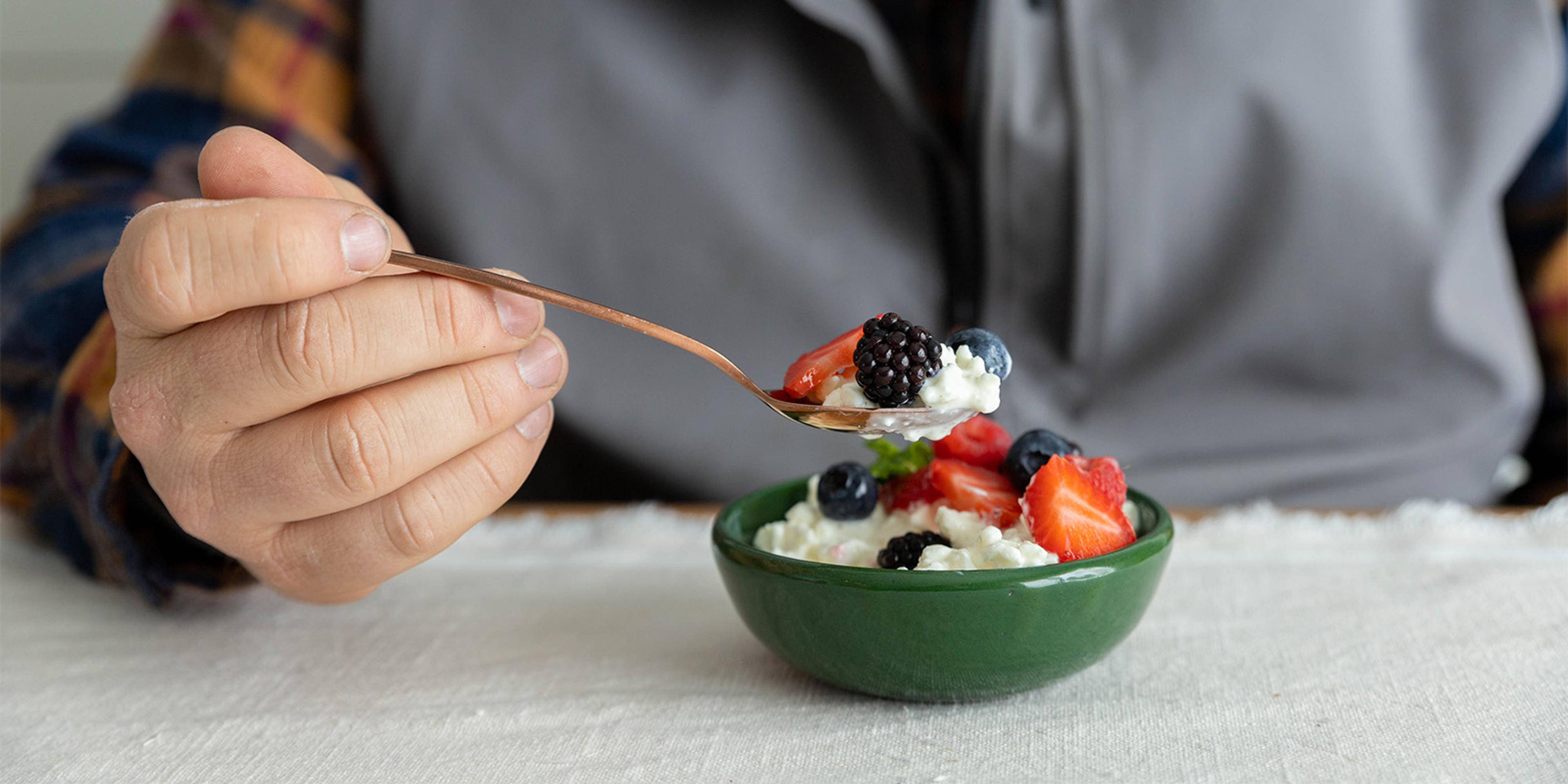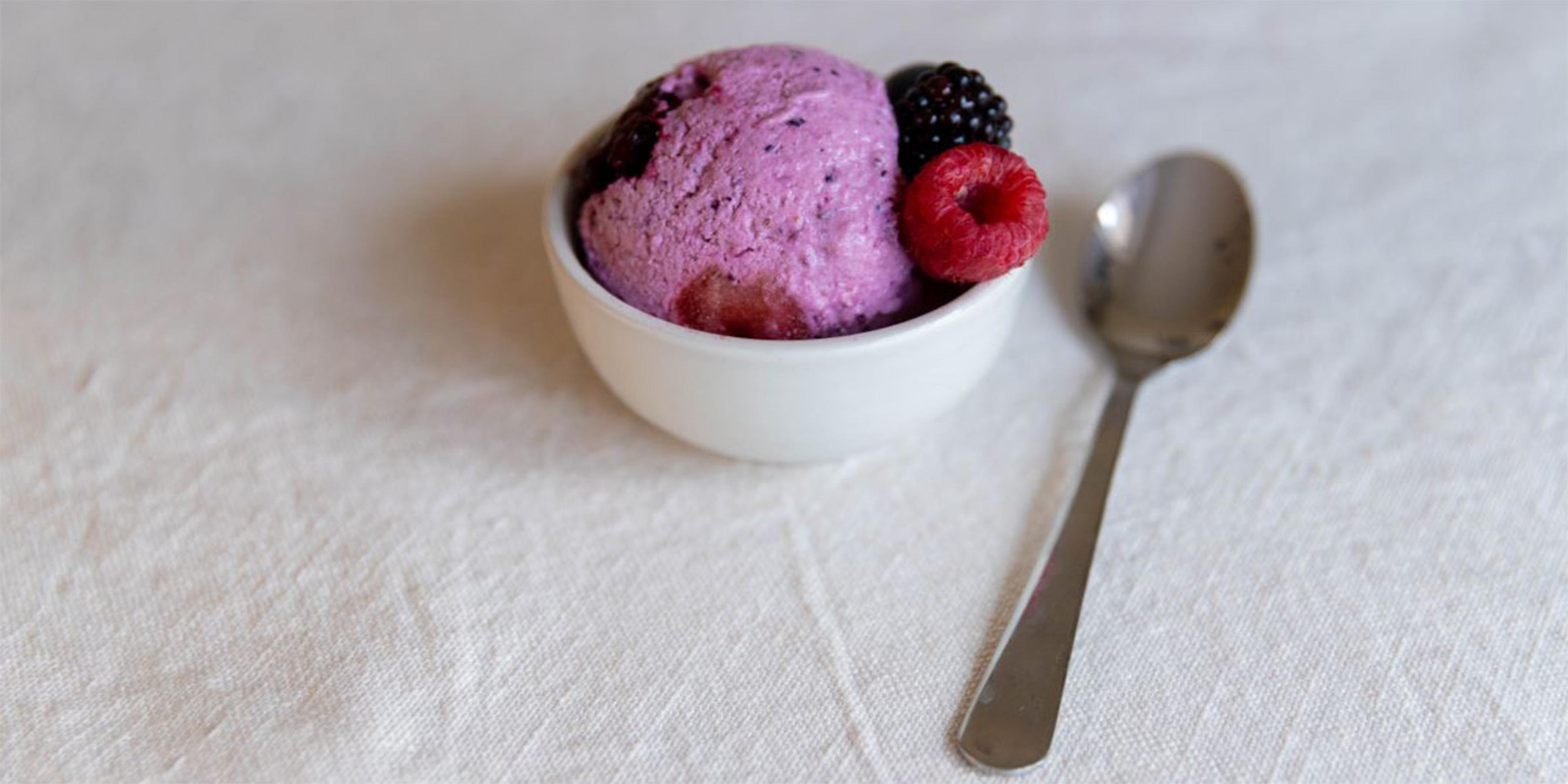
Food
Nutrient Dense and Versatile – Cottage Cheese Is Sure to Please
Cottage cheese is a high-protein ingredient that is getting a lot of attention these days. Between its delicious taste, the dynamic nutrition it provides and its versatility, it isn’t hard to see why this cheese is having its moment in the spotlight.
In a world where yogurt was the ultimate dairy snack is now becoming a cottage cheese-friendly world for a slew of reasons, including cottage cheese’s muscle-building protein, bone health-supporting calcium and creamy taste make it desirable. In a nutshell, cottage cheese is finally getting the attention that it deserves.
If you are a fellow cottage cheese lover ready to learn exactly what makes it such a healthy, versatile and appealing food, read on to learn more.
What Is Cottage Cheese?
Before we start singing cottage cheese’s praises regarding the nutrition it provides, it’s a good idea to make sure you understand what cottage cheese actually is. Many of us get our cottage cheese from our local grocery store and don’t give the process a second thought.
The process of making this curd-packed food is quite interesting.
One key detail regarding cottage cheese-making is understanding that milk has two major proteins: casein and whey. A cheese curd has many components, including fat, proteins, moisture and minerals. The remaining protein is mostly casein.
Cottage cheese can be made in two ways: direct acidification or relying on the cultures to convert lactose (milk sugar) into lactic acid. Direct acidification is done by adding an acidic ingredient, like vinegar, and is a rapid method. The culturing method takes anywhere from 5 to 10 hours, depending on the type and amount of cultures used. In addition, rennet (an enzyme) may be used to help speed coagulation of the milk.
The whey and cheese curd are separated after coagulation occurs. Cultures are also used for flavor and further acid production.
That is how the curds are made. Meanwhile, the liquid part (called dressing) is being mixed. This includes skim milk, cream, salt and sometimes other cultures.
The curds and dressing are combined and put in the container. The result is the cottage cheese many of us know and love.

Organic Valley Cottage Cheese comes from milk produced by cows on family farms like the Hoffner farm in North Carolina.
Health Benefits of Cottage Cheese
Cottage cheese isn’t just a delicious food that kids and grown-ups all seem to enjoy. This classic dairy food is jam-packed with important nutrients many of us can use more. And it is so nutrient-dense and good for you that if you are a superfan, you can eat cottage cheese daily!
May Support Muscle Growth and Repair
When it comes to nutrition, cottage cheese is perhaps best known for its high protein content. Organic Valley Cottage Cheese has 13 grams of protein per 1/2 cup. One serving will provide more of this macro than eating an entire egg! Protein is important for many health reasons, including its role in muscle growth and repair.
May Support Bone Health
Our bones depend on us consuming certain nutrients to help keep them healthy and strong. And when it comes to foods that contain bone health-supporting nutrients, cottage cheese is no slouch.
Cottage cheese contains the following bone health-supporting nutrients:
- Calcium.
- Magnesium.
- Phosphorus.
- Potassium.
- Zinc.
- Vitamin A.
May Support Brain Health
Focusing on certain nutrients can help our brain health stay in tip-top shape. No matter if it is a baby trying their first food or an elderly person enjoying a midday snack, eating the right foods can help keep your brain sharp and focused.
Some brain health-supporting nutrients found in cottage cheese include:
- Vitamin B12.
- Folate.
- Choline.
- Selenium.
- Riboflavin.

Cottage Cheese an Ideal First Food for Babies
Babies need to eat a variety of age-appropriate foods once they start consuming less breast milk or formula. While it is true that babies should not be fed cow’s milk beverages until the age of 1, they can eat cheese. Large-curd cottage cheese is a baby-friendly dairy food that is easy for tiny fingers to grasp and for little mouths to chew. Plus, it is a source of zinc, a nutrient that the Dietary Guidelines for Americans highlights as a nutrient many babies do not consume enough of during this life stage.
Organic Valley Cottage Cheese 4% Milkfat Small Curd Cheese is an ideal first food for babies since it’s U.S. Department of Agriculture Certified Organic, non-GMO and made from milk from pasture-raised cows.
May Support Weight Management Goals
Eating cottage cheese may help people lose weight, thanks to it being a food that may promote satiety, ultimately assisting people to eat fewer calories. Some data also show that eating more protein may increase the calories a person burns at rest, which can support weight loss, too.
Cottage Cheese May Help You Sleep
While eating cottage cheese in the evening won’t be a magic bullet to helping you get some serious shut-eye, some evidence suggests that it may offer benefits to support sleep.
Like a warm glass of milk, cottage cheese provides the amino acid tryptophan. This amino acid is converted into the hormone melatonin, which may help some people sleep more easily. Cottage cheese also contains magnesium, a mineral that may support sleep efficiency.
How to Include Cottage Cheese in Your Diet
If you are sold on the potential benefits you may reap if you include cottage cheese in your diet, you may wonder if there are different ways to incorporate it. Sure, you can eat it in a bowl topped with fruit, but there are some out-of-the-box ways to give cottage cheese a whirl, too.
- Add a dollop to your baked potato, and top it with fresh chives.
- Add a scoop to marinara sauce for a creamy pasta addition.
- Include it in a smoothie recipe to add thickness and protein.
- Top your toast with cottage cheese and drizzle honey on top.
- Add it to pancake or waffle batter for a protein-packed breakfast.
- Top a scoop with cinnamon and diced apples.
- Use it in lasagna recipes instead of ricotta.
- Substitute blended cottage cheese for sour cream in dip recipes.
- Add it to your scrambled eggs for a creamier breakfast dish.
- Pair cottage cheese with kimchi for a gut health-supporting combo.
Make a trendy cottage cheese ice cream treat. Check out these four cottage cheese ice cream recipes created by Organic Valley’s product development manager.

Bountiful Berry Cottage Cheese Ice Cream
Bottom Line
Cottage cheese is a healthy food that may support many aspects of your health, including your bone health and weight management goals. When choosing your cottage cheese, opting for Organic Valley Cottage Cheese will provide you with a choice that never uses antibiotics, synthetic hormones, toxic pesticides, or any genetically modified products so you can feel good serving it to your family.
Bonus? When you support Organic Valley products, you also support its mission: to provide its farmers with a sustainable pay price and, ultimately, save small organic family farms.
As long as you don’t have lactose intolerance or a dairy milk allergy, including cottage cheese in your diet can help you include many key nutrients in your diet in a convenient and delicious way. So, feel free to jump on the cottage cheese trend. Your body will thank you for it!
Lauren Manaker is an award-winning registered dietitian and book author. After spending over 15 years working in health care and industry, she started a consulting business focusing on reproductive, pediatric and women’s health. Lauren resides in Charleston, South Carolina, with her husband and young daughter. In her spare time, she can be found enjoying an outdoor oyster roast in the cooler months, doing anything on the water in the warmer months, and practicing yoga year-round.
Related Articles
- Tags:
- organic nutrition,
- children,
- snacktime,
- DIY,
- high quality products


















